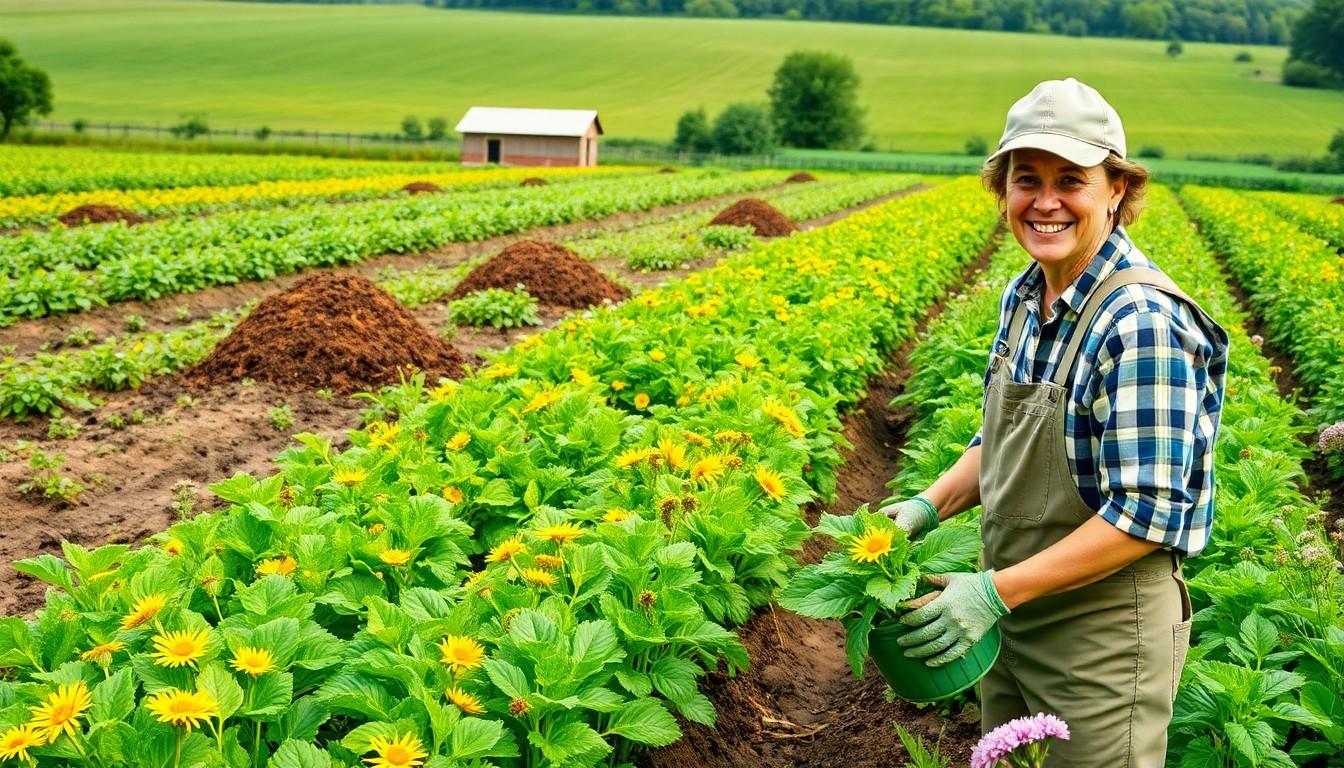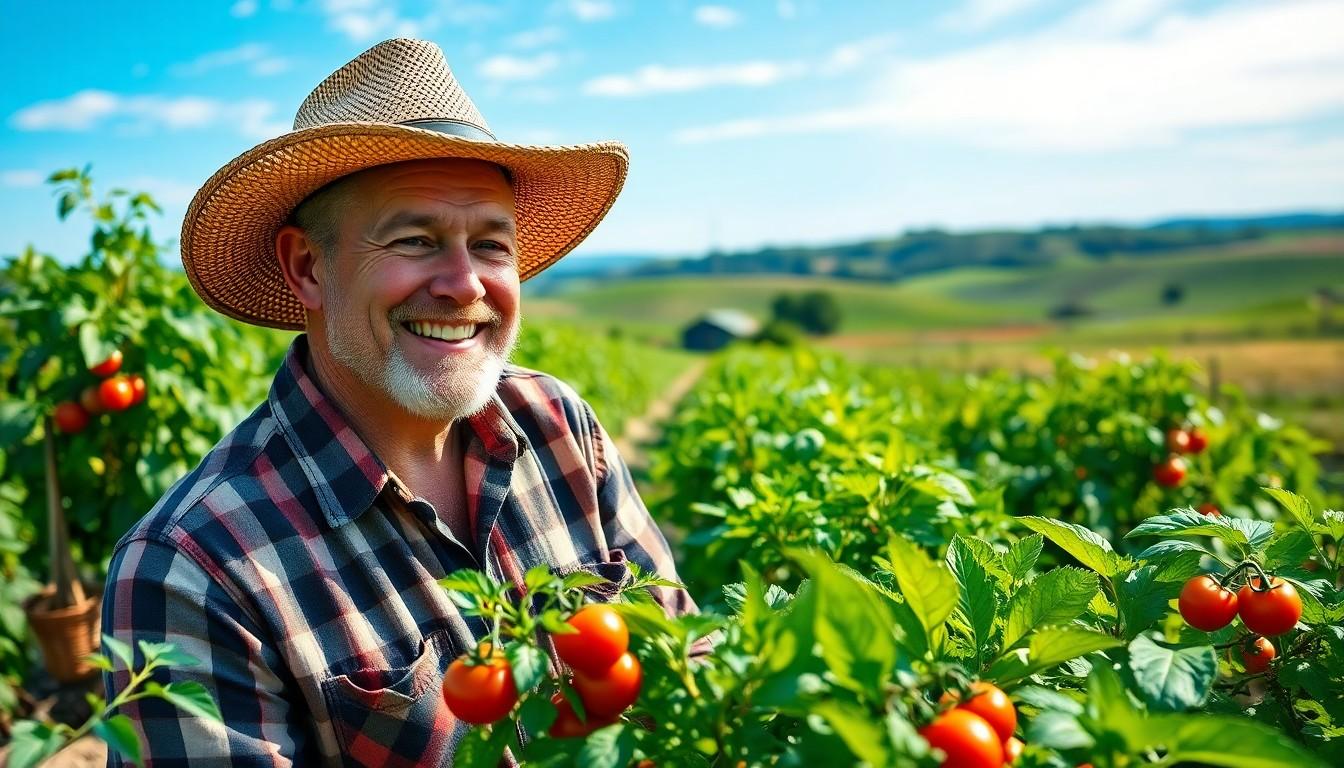In a world where food often comes with a side of mystery ingredients, organic farming stands out like a superhero in a cape. It’s not just about avoiding pesticides and GMOs; it’s a lifestyle choice that champions sustainability, health, and a sprinkle of good old-fashioned dirt. Picture this: farmers lovingly tending to their crops while birds chirp and bees buzz, creating a harmonious ecosystem that even Mother Nature would approve of.
Worldwide Organic Farming
Worldwide organic farming has gained significant traction, reflecting a shift toward sustainable agricultural practices. According to the Research Institute of Organic Agriculture, global organic farmland reached 75 million hectares in 2021, representing a 3.2% increase compared to 2020. Countries such as Australia, Argentina, and the United States lead in organic land area, promoting diverse crops in harmony with nature.
Europe also plays a crucial role in organic farming, with over 30% of the world’s organic farmland located in Germany and France. The European Union emphasizes eco-friendly practices, implementing stricter regulations that support organic farming and reduce chemical use. In 2020, Europe accounted for around 40% of global organic sales, demonstrating a strong market demand.
Farmers engaging in organic practices often experience economic benefits alongside environmental ones. Higher prices for organic produce incentivize growers to adopt these methods, allowing them to differentiate their products in saturated markets. It is reported that organic products can command prices up to 30% higher than conventional counterparts, appealing to health-conscious consumers.
Consumer interest in organic products is rising, driven by concerns over food quality and environmental sustainability. According to the Organic Trade Association, U.S. organic sales reached $61.9 billion in 2020, with about 15% growth in the organic food sector. This trend indicates a growing appreciation for organic farming’s role in promoting health and protecting ecosystems.
Supporting policies and certifications further bolster the organic movement. Various organizations worldwide offer certifications that validate organic practices, enhancing consumer trust. As more stakeholders recognize the benefits of organic farming, the sector is poised for continued growth, encouraging a global shift towards more sustainable agricultural systems.
Benefits of Organic Farming

Organic farming offers numerous advantages that contribute to sustainability and improved health outcomes.
Environmental Benefits
Organic farming enhances soil health by promoting biodiversity. Farmers utilize natural compost and cover crops, which enrich the soil while minimizing erosion. Water quality improves through reduced runoff from pesticides and synthetic fertilizers. Pollinator populations thrive as organic farms often feature diverse plant life, aiding in ecosystem balance. Also, lower greenhouse gas emissions result from reduced reliance on fossil fuel-intensive farming practices. Research indicates that organic methods can sequester carbon in soil, further combating climate change.
Health Benefits
Health benefits associated with organic farming include reduced exposure to harmful chemicals. Consuming organic produce decreases the likelihood of pesticide residue in food. Nutritional quality also improves; studies show organic fruits and vegetables often contain higher levels of antioxidants. Additionally, organic farming practices promote animal welfare, which leads to healthier livestock products. The absence of GMOs in organic farming aligns with consumer preferences for natural foods. Organic diets contribute to overall well-being, supporting a healthier lifestyle.
Challenges in Organic Farming
Organic farming faces several significant challenges despite its benefits and growing popularity globally. These challenges can hinder the expansion and efficiency of organic practices.
Economic Challenges
Economic barriers often limit the growth of organic farming. Initial investments for organic certification and necessary infrastructure can be substantial. Farmers frequently experience higher production costs due to the labor-intensive nature of organic practices. The market often reflects varied demand; some organic products do not guarantee premium pricing. For example, conventional produce can sometimes sell at lower rates, making it challenging for organic farmers to compete. Access to resources remains a concern, as not all farmers have equal opportunities for sustainable funding and financial support.
Logistical Challenges
Logistical hurdles complicate the distribution of organic products. Supply chain inefficiencies frequently disrupt timely delivery. Limited organic wholesalers contribute to this issue, often leading to higher transportation costs. Farmers also struggle with the availability of organic inputs, such as seeds and fertilizers, which are not always accessible. Additionally, maintaining organic standards throughout the supply chain requires continuous oversight, adding complexity. These logistical challenges can ultimately impact the reliability and affordability of organic products in the marketplace.
Global Trends in Organic Farming
Current trends in organic farming show a steady increase in worldwide participation. Organic farmland reached 75 million hectares in 2021, a testament to the growing interest in sustainable agriculture. Australia, Argentina, and the United States rank as leaders in organic land area, significantly shaping global markets.
Europe’s contribution is notable, with over 30% of the world’s organic farmland located in Germany and France. These countries generated around 40% of global organic sales in 2020, illustrating their pivotal role in the economy. Economic benefits are evident for farmers embracing organic practices, who can command prices up to 30% higher than those of conventional products due to rising consumer demand for quality and sustainability.
Supporting policies and certifications bolster this movement, fostering consumer trust and driving broader adoption of organic farming methods. Enhanced soil health stands out among environmental benefits, driven by biodiversity, natural compost, and cover crops. Water quality improves as organic practices reduce chemical runoff, and pollinator populations flourish in these systems.
Greenhouse gas emissions see a decrease, and organic farming can sequester carbon effectively, contributing to climate change mitigation. In terms of health, reduced exposure to harmful chemicals enhances nutritional quality for consumers. Animal welfare benefits as well, aligning organic practices with shifting consumer preferences for natural food sources.
Challenges remain, including high initial investment costs and labor-intensive production, which can hinder the growth of organic farming. Inconsistent market demand and logistical issues complicate access to organic inputs, impacting the affordability of organic products. Despite these obstacles, the movement toward sustainable agriculture continues to gain momentum globally.
Future of Worldwide Organic Farming
Organic farming is poised for substantial growth in the coming years. Projections indicate that the global market for organic food may reach $272 billion by 2027, driven by increased consumer awareness and preference for sustainable practices. Countries like Australia, Argentina, and the United States are already leading the charge in organic farmland acreage, with 75 million hectares cultivated as of 2021.
Innovation plays a crucial role in shaping the future. Technological advancements in organic farming techniques are enhancing efficiency and sustainability. Tools such as precision agriculture and drone technology streamline operations and improve crop management. Additionally, collaborations among farmers, researchers, and organizations promote knowledge sharing and resource optimization.
Consumer trends also influence organic farming. As more individuals become health-conscious, demand for organic produce continues to rise. Organic products now fetch prices up to 30% higher than their conventional counterparts, presenting lucrative opportunities for farmers. With policy support and certifications, trust in organic products strengthens, further propelling market growth.
Sustainability initiatives also shape the future of organic practices. Farmers increasingly adopt practices like crop rotation, cover cropping, and integrated pest management to bolster soil health and biodiversity. These initiatives align with global efforts to combat climate change, allowing organic farming to play a vital role in environmental stewardship.
Challenges persist, yet opportunities abound. Economic barriers and inconsistent market demand present obstacles to growth. Farmers must navigate initial certification costs and labor-intensive practices while adapting to shifting consumer preferences. However, rising participation in organic farming and the ongoing commitment to sustainable agriculture indicate a promising future for the sector.
Contribute to a Healthier Planet
The future of worldwide organic farming looks bright as both consumers and farmers embrace sustainable practices. With the global market for organic food projected to soar in the coming years it’s clear that the demand for healthier and environmentally friendly options is only growing.
Innovative technologies and supportive policies are paving the way for a more efficient and accessible organic farming landscape. While challenges remain the commitment to nurturing ecosystems and promoting health through organic practices is stronger than ever.
As awareness continues to rise the movement towards organic farming not only supports individual well-being but also contributes to a healthier planet.

